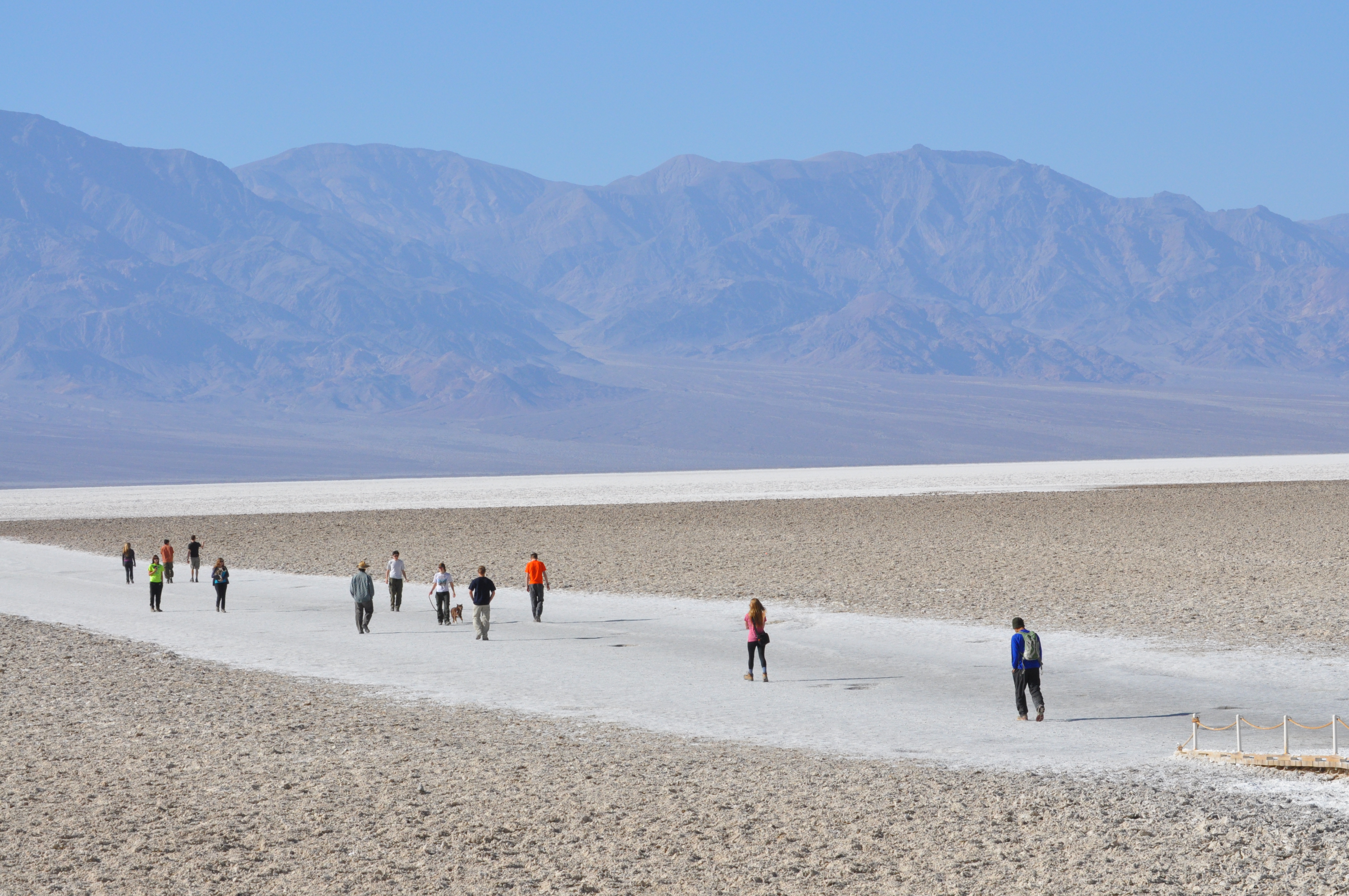As far as the eye could see there was nothing but a salty, dry and cold lake bed ringed by craggy mountains. Even with the comfort of modern hiking boots, high-performance jackets and the knowledge that backup water was nearby, the sight of the vast Badwater Basin in Death Valley National Park tends to bring two words to mind — Go back.
But as a student in the undergraduate University Honors interterm course “Gold Diggers: Economic Development in the Wake of the California Gold Rush,” Matthew Earle ’14 knew many pioneer gold seekers had faced this scene and forged ahead anyway. And standing in the midst of that environment on a recent January day made the textbook study of the Gold Rush snap to life, Earle said.
“You look out and everything is just dead and dry for 100 miles ahead of you. I could not imagine the feeling and the absolute soul-crushing doubt they felt rolling into that with a horse and wagon. It’s all dirt and salt,” he said.
But roll they did because, of course, just above the dirt and salt was gold. To help students glimpse the gritty reality of the great economic event, a trio of faculty from Chapman University’s Economic Science Institute created the interterm course. In addition to a sizable amount of reading, lectures and a final research paper, the course required a week of rugged backpacking in the footsteps of those pioneer miners. Camping was primitive. Hikes were daily, sometimes hand-over-hand through rocky passages. And each night everyone gathered around a campfire to discuss the course readings, which included textbook and contemporary research on the era, as well as the memoirs of Gen. William Tecumseh Sherman and Mark Twain’s Roughing It.
The course was created and led by Presidential Fellow Professor Steve Gjerstad, Ph.D., as well as Eric Schniter, Ph.D., postdoctoral research associate professor, and adjunct faculty Joy A. Buchanan ’10 economics/screenwriting and ’11 (M.S.) economic systems design. The Gold Rush is fascinating to economists because it’s a condensed example of how an economy moves from subsistence to great wealth, says Dr. Gjerstad.
“We saw it as a really interesting case study in economic development because it happened so fast,” and had economic, political and social consequences for the rest of the nation, Dr. Gjerstad said. Understanding the human behavior influencing economic development is one of the cornerstones of experimental economics, he said.
“The Gold Rush set (California) on a different path from other places,” he said.
While the lion’s share of the Gold Rush played out in the Sierra foothills, the more southerly mines in what is now Death Valley National Park were also part of the story and more accessible during the January interterm. Dr. Gjerstad said they are considering creating a summer travel class that would take a similar trip to Northern California’s gold country.
Display image at top courtesy of Steve Gjerstad





Add comment